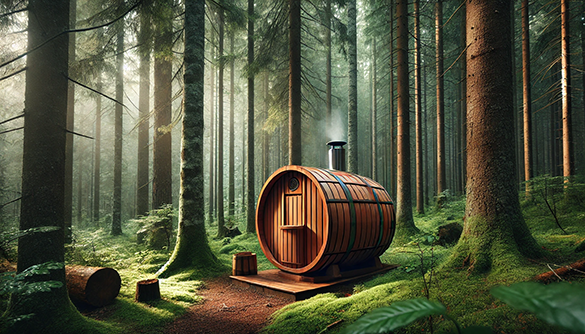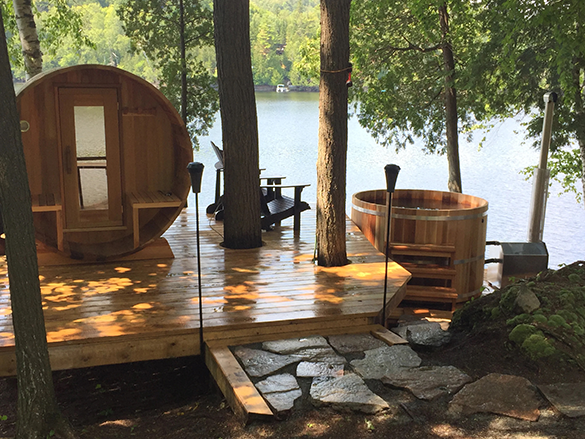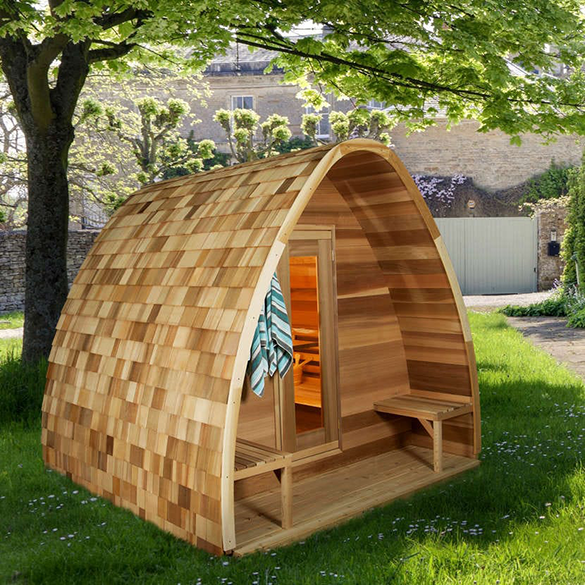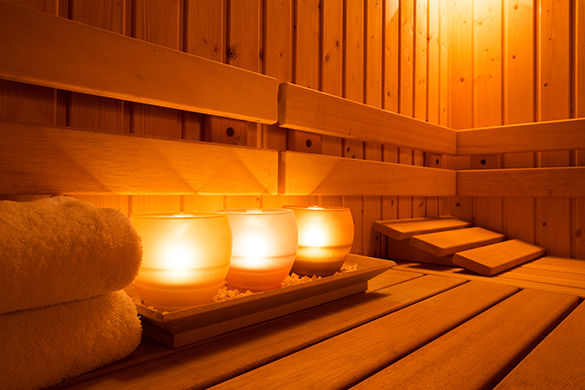What is the difference between cedar and Thermowood for my outdoor sauna?

When deciding between cedar and Thermowood for your outdoor sauna, it’s important to consider each material’s properties and how they affect the usability, durability, and aesthetics of the sauna.
Here are the key differences:
Material Composition and Treatment:
Cedar: Cedar is a naturally occurring wood, renowned for its durability, rot resistance, and aromatic properties.
Its natural oils and tannins provide inherent resistance to insects and decay, making it a popular choice for outdoor applications.
Thermowood: Thermowood is thermally modified wood. It undergoes a controlled heating process (usually above 180°C) in the absence of oxygen.
This process alters the wood’s structure, enhancing its stability, durability, and resistance to biological decay.




Durability and Stability:
Cedar: Naturally durable and weather resistant, cedar remains stable under varying outdoor conditions.
It doesn’t warp or shrink significantly, which is crucial in sauna environments.
Thermowood: Highly stable due to the thermal modification process, which reduces its moisture content.
This makes Thermowood less prone to warping, twisting, or swelling, and increases its longevity against harsh environmental conditions.
Aesthetic Appeal:
Cedar: Known for its distinctive reddish-brown colour and attractive grain pattern. It often emits a pleasant, natural aroma, which can enhance the sauna experience.
Over time, cedar weathers to a silvery-grey patina when exposed to sunlight.
Thermowood: Exhibits a uniform darkened colour, similar to tropical hardwoods, due to the thermal treatment.
It maintains its colour more consistently compared to untreated wood, although UV exposure can still lead to some colour change over time if not treated.




Thermal Insulation and Comfort:
Cedar: Provides excellent thermal insulation, helping to keep the sauna environment consistent.
The wood stays relatively cool to the touch, even in high temperatures, enhancing user comfort.
Thermowood: Exhibits improved thermal properties over all other wood types (except cedar of course), due to the modification process, making it a good insulator.
It also tends to stay cool to the touch, similar to cedar.
Maintenance and Longevity:
Cedar: Requires minimal maintenance, but regular treatment with oil or sealant can prolong its life and maintain its appearance.
Thermowood: Generally lower maintenance due to its increased resistance to decay and deformation. It benefits from occasional oiling if natural colour retention is desired.




Environmental Impact:
Cedar: Sourcing sustainably grown cedar is important to minimise environmental impact, as it is a natural resource.
Thermowood: Often sourced from sustainably managed forests.
The thermal modification process doesn't use chemicals, making it environmentally friendly.
Ultimately, the choice between cedar and Thermowood for an outdoor sauna depends on personal preferences regarding appearance, budget, and specific property needs.
Both are excellent choices for durability and comfort, with individual strengths in aesthetics and maintenance.





